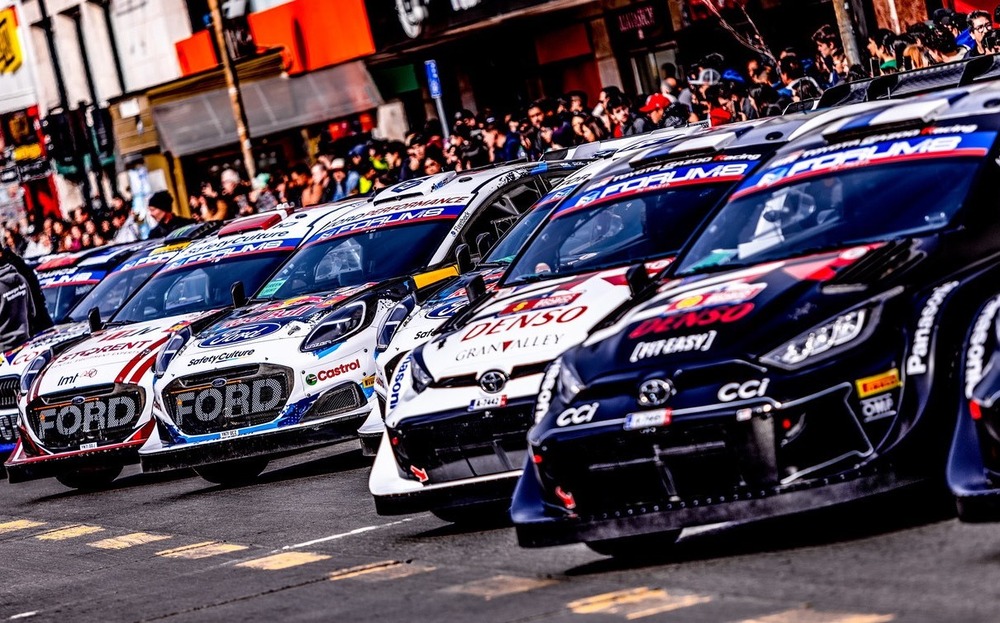The World Rally Championship is set to welcome a new era with the recent approval of the WRC27 technical regulations by the World Motor Sport Council.
This landmark decision, made during a meeting in Rwanda on December 11, 2024, sets the stage for a transformative decade in rally racing emphasizing sustainability, cost cap reduction, and technological innovation.
The new WRC27 technical regulations will come into effect at the start of the 2027 season and are designed to create a more dynamic and flexible future for the championship.
A key feature of the WRC27 regulations is the introduction of a cost cap aimed at making participation more accessible for teams and manufacturers. The maximum cost for new cars is set at €345,000 ($362,000), which represents a reduction of over 50% compared to current Rally1 cars that can cost nearly one million euros.
This significant decrease in costs is expected to encourage more teams to enter the championship and foster competition among existing manufacturers. The WMSC’s statement emphasized that these changes were formulated after extensive consultations with stakeholders, including manufacturers, promoters, and team representatives.
The WRC27 technical regulations will operate on a ten-year homologation cycle, which is double the usual period. This extended cycle aims to provide stability for manufacturers and teams, allowing them to invest confidently in their programs.
The WRC Commission has been instrumental in developing these regulations, ensuring that they reflect the needs and desires of competitors, organizers, and fans alike. FIA President Mohammed Ben Sulayem has highlighted the importance of these regulations for the long-term growth of the sport.
“The regulations that we have approved today are critical to the long-term growth of the FIA World Rally Championship,“ Ben Sulayem said. “They lay the foundations for an exciting future with a focus on cost containment, sustainability and growing participation at the top level of rallying.”
President of the WRC Commission Pernilla Solberg expressed gratitude to all involved in this regulatory process. She noted that these changes would not only feature a reduced cost cap but also enable independent teams to compete more effectively against established manufacturers.
“I would like to thank all the Commission members and the WRC Technical Working Group for the significant amount of work that has got us to this stage,“ Solberg said.
“We set some clear objectives based on what the competitors, organisers and fans were telling us, and this has resulted in a set of regulations that will massively reduce costs and allow independent teams to compete with manufacturers, while giving the WRC the flexibility to remain relevant regardless of the shifting automotive landscape.
“We still have some work to do, but I’m really excited for this future.”
One of the most exciting aspects of the WRC27 technical regulations is their focus on powertrain diversity. The championship has been a pioneer in promoting sustainable fuels, having mandated their use starting in 2022.
The new regulations will allow teams to choose between sustainably-fueled internal combustion engines (ICE), hybrid powertrains, or fully electric solutions.
While the initial target for 2027 focuses on sustainably-fueled ICEs, there is potential for hybrid systems or fully electric technologies to be introduced later in the decade.
This flexibility reflects the evolving automotive landscape and aims to position the WRC as a leader in technological innovation within motorsport.
In addition to powertrain options, the WRC27 technical regulations will introduce spaceframe chassis designs based on Rally2 specifications. This change will facilitate easier construction and maintenance while reducing overall complexity.
The Rally2 spec engines, transmissions, and brakes will be used in the new cars, further aligning with cost-reduction goals. The target weight for these cars is set at 1,230 kilograms, maintaining a silhouette philosophy that accommodates various vehicle shapes while allowing room for scaled SUV models.
The WRC27 technical regulations also aim to reduce operational costs for teams by limiting personnel numbers and enhancing data connectivity for offsite engineering support. By encouraging teams to utilize local facilities and streamline logistics transport costs, the sport hopes to alleviate financial pressures on participants while maintaining competitive integrity.
The flexibility built into these regulations ensures that the WRC remains relevant amid shifting automotive trends while continuing to attract new participants.





